- News
- Reviews
- Bikes
- Accessories
- Accessories - misc
- Computer mounts
- Bags
- Bar ends
- Bike bags & cases
- Bottle cages
- Bottles
- Cameras
- Car racks
- Child seats
- Computers
- Glasses
- GPS units
- Helmets
- Lights - front
- Lights - rear
- Lights - sets
- Locks
- Mirrors
- Mudguards
- Racks
- Pumps & CO2 inflators
- Puncture kits
- Reflectives
- Smart watches
- Stands and racks
- Trailers
- Clothing
- Components
- Bar tape & grips
- Bottom brackets
- Brake & gear cables
- Brake & STI levers
- Brake pads & spares
- Brakes
- Cassettes & freewheels
- Chains
- Chainsets & chainrings
- Derailleurs - front
- Derailleurs - rear
- Forks
- Gear levers & shifters
- Groupsets
- Handlebars & extensions
- Headsets
- Hubs
- Inner tubes
- Pedals
- Quick releases & skewers
- Saddles
- Seatposts
- Stems
- Wheels
- Tyres
- Health, fitness and nutrition
- Tools and workshop
- Miscellaneous
- Tubeless valves
- Buyers Guides
- Features
- Forum
- Recommends
- Podcast
review
£2,300.00
VERDICT:
Truly stunning frameset at this price point, which justifies the component compromises
Weight:
7,900g
Contact:
At road.cc every product is thoroughly tested for as long as it takes to get a proper insight into how well it works. Our reviewers are experienced cyclists that we trust to be objective. While we strive to ensure that opinions expressed are backed up by facts, reviews are by their nature an informed opinion, not a definitive verdict. We don't intentionally try to break anything (except locks) but we do try to look for weak points in any design. The overall score is not just an average of the other scores: it reflects both a product's function and value – with value determined by how a product compares with items of similar spec, quality, and price.
What the road.cc scores meanGood scores are more common than bad, because fortunately good products are more common than bad.
- Exceptional
- Excellent
- Very Good
- Good
- Quite good
- Average
- Not so good
- Poor
- Bad
- Appalling
The Merida Scultura 6000 just feels right when you get on it. The position, the ride, the comfort… it's one of those bikes that gives you the confidence to push it as hard as you want, knowing that it isn't going to bite back. It's a bit of a bargain too when you consider the frame is being ridden in the pro peloton and weighs a claimed 750g. It's a hell of a lot of bike for the money.
I had just dropped a Reynolds 853-tubed test bike back to the office before getting aboard the Merida to ride home, and do you know what? The differences in ride quality between the two were barely discernible – high praise for a thin-walled, lightweight carbon frame, which tend to have a reputation for being ever so slightly buzzy.
> Find your nearest dealer here
For this revised version of the Scultura frameset Merida has concentrated on increasing comfort, and it's obviously paid off. The frame is handmade in Taiwan, and by tweaking the carbon layup in certain areas it has been able to bring in quite a bit of extra damping without sacrificing stiffness.
Damp 'n' blast
The 6000 always feels planted; you know exactly what the bike's doing all of the time as there is so much feedback. It's impressive that Merida has been able to damp the ride so much without muting the feel – it's a clever balance.
Merida has also positioned the rear brake below the chainstays, which allows for the removal of the usual brake bridge. This lets the seatstays flex in both directions, promoting comfort. It doesn't work on every bike we've tried because the carbon layup still has to be right, but here on the Scultura you can feel a little bit of give, which takes the sting out before it reaches the saddle.
The handling is another high point. It's direct and quick but never twitchy, especially once your speed starts to increase. You're getting some decent levels of grip here from the Continental tyres, don't get me wrong, but the frame – especially the front end with its tapered head tube and fork steerer – is so solid it never moves a millimetre off its line.
I'm a fan of descending, especially the technical type, and if the steering has a weakness it's here it'll show up. The Scultura hasn't any issue, it's so stable – one of those bikes you really feel like you're a part of. Nothing especially stands out to explain why it's so good, it just is; it works. You blast down the hill, you shift your body weight, it turns, it grips, it feels natural, flowing if you like.
This might all sound like journo guff but it's really not. When you get on a bike and it rides like this, it's just simple: this bike is really good.
Nano speak
Right, we've done the comfort thing, so what about the stiffness? These two things don't normally go hand in hand...
Merida has used a carbon fibre that's had nanoparticles added. It calls it Nano Matrix Carbon and explains it thus: 'The carbon mats are enriched with special nanoparticles which strengthen the matrix of the epoxy resin. In this way, the impact resistance of the final component construction can be increased successfully by up to 40%.'
Does it work? Well I certainly couldn't detect any flex from the business end of the frame when accelerating or climbing while out of the saddle.
By increasing the stiffness of the frame material without losing strength, and so be able to use less of it, Merida has been able to drop the weight without creating a loss in efficiency. This allows for the larger tube profiles you see and things like the increased size of the BB386 over a standard threaded bottom bracket.
If you haven't come across the BB386 standard before, it's basically a mix of BB30 and BB90 so you're getting the performance benefits of both. The axle diameter is increased to 30mm (a standard Shimano one, for instance, is 24mm), and as the bearing cups press into the frame the actual shell can be increased to 86mm – which is the same as a standard BB shell of 68mm plus the external threaded bearing cups. You get the same distance between the pedals (q-factor) but more frame material in between, resulting in a larger surface area for stiffness.
Aerodynamics was another target for Merida, using computational fluid dynamics in the design process and wind tunnel testing of various incarnations. It even used a dummy with moving legs to replicate the effect the rider's pedalling has on wind resistance.
The tube cross sections are based on the NACA0028 aerofoil wing profile with a fastback trailing edge, meaning that the back of the aerofoil profile has been chopped off square instead of tapering away gradually. The idea is to keep the airflow consistent without causing much turbulence.
The results out in the real world aren't really that noticeable to be honest. It's not like the Storck Aerfast we've recently tested where you could actually feel the benefits.
Component compromises
With a frame and fork as impressive as this there are always going to have to be sacrifices to keep the overall price down, so it comes as no surprise that the Scultura has a few.
We'll start with the wheels. Fulcrum's Racing PRCs offer pretty decent performance in relation to their cost, but their weight does hamper the Scultura's acceleration and climbing. They're solidly built, mind you; pretty much every test ride has been in the wet and they've seen a hell of a lot of standing water and the bearings are still running quietly and smoothly. And the Continental Grand Sport tyres offer decent levels of grip and are plenty robust enough for the majority of conditions. The Scultura comes with 25mm tyres fitted, which is pretty much the maximum that'll fit – it is a race bike after all.
The shifters and mechs are all Shimano Ultegra, but because of the 30mm axle size of the bottom bracket, a standard 24mm Shimano crankset won't fit without the use of adaptors. Merida has specced a BB386-specific FSA Gossamer chainset which, as good as it is, just doesn't quite offer the same quality of shifting as Ultegra rings. Personally, I'd prefer a reduction in stiffness of the larger diameter axle for a cleaner gear change between the 50/34-tooth chainrings.
Another thing I'm not too impressed with is the Merida own-brand front brake calliper (the rear is a Tektro Direct Mount). It just isn't stiff enough to offer the type of powerful braking and modulation a bike of this style demands. Again, an upgrade to Ultegra would make a big difference.
Plush points
I found the colour-coded Prologo saddle very comfortable. The padding is pretty firm, which is good because there is a quite a bit of it considering it's a race saddle. The shape, with the upturned rear and dropped nose, means it fits whatever your riding position.
Beneath the Prologo is a Merida branded carbon seatpost with an alloy clamp. It's nothing flash and we've seen it on some of Merida's lower priced bikes, but it makes setting the saddle up a doddle with its bolt and thumbscrew fixings.
Merida also provides the alloy stem, which comes with a carbon faceplate for that added bling factor. Working in combination with the FSA Gossamer oversized handlebar it's a stiff cockpit and, thanks to the plush bar tape, a comfortable one too.
Conclusion
Overall the Scultura comes down to an awesome frameset, a pretty decent groupset, and average components. If I had the same budget and I was building a bike myself that's the order in which I'd place my priorities before upgrading the wheels and other stuff over time. You could enter superbike territory for not a huge outlay.
> Check out road.cc's favourite road bikes for 2015/16 here
The ride quality and build quality of the frame is brilliant, though the sacrifices made in the component selection just take the shine off enough to stop the Merida being a 9/10 bike overall. Things like poor brakes have no place on a £2300 bike.
It's a shame there's no frameset-only option.
Verdict
Truly stunning frameset at this price point, which justifies the component compromises
road.cc test report
Make and model: Merida Scultura 6000
Size tested: M/L
About the bike
State the frame and fork material and method of construction. List the components used to build up the bike.
FRAME SCULTURA CF4
FORK Full carbon fork with tapered steerer
DERAILLEUR Shimano Ultegra
SHIFTERS Shimano Ultegra
BRAKE LEVER Shimano Ultegra
BRAKES Merida Road Pro / direct mount rear
CHAINSET FSA Gossamer Pro 50-34
BB FSA Gossamer Pro Pressfit
CHAIN KMC X11EL
WHEELSET Fulcrum Racing PRC
FREEWHEEL Shimano 5800 11-28
TYRES Continental Grand Sport Race 25
HANDLEBAR STEM Merida Pro
HANDLEBAR FSA Gossamer
HEADSET B44-4852
SEAT POST Merida Carbon
SADDLE Prologo Kappa 3
Tell us what the bike is for, and who it's aimed at. What do the manufacturers say about it? How does that compare to your own feelings about the bike?
The new Scultura frame is straight from the peloton being ridden by Merida's sponsored teams. As you would expect this means it's certainly stiff and very light, plus Merida has concentrated on the aerodynamics. You don't get the aero benefits of, say, the recently tested Storck Aerfast but the Scultura is still a very capable, fast bike to ride.
Frame and fork
Overall rating for frame and fork
9/10
Tell us about the build quality and finish of the frame and fork?
The frame is handmade in Taiwan from 400 pieces of pre-preg carbon fibre, a time-consuming process, but the finished product is very well built with a real eye on the details.
Tell us about the materials used in the frame and fork?
The carbon fibre used in the frame and fork is what Merida calls 'Nano Matrix Carbon'. I'll let Merida explain: "The carbon mats are enriched with special nanoparticles which strengthen the matrix of the epoxy resin. In this way, the impact resistance of the final component construction can be increased successfully by up to 40%."
The fork also uses internal ribs for extra strength and stiffness.
Tell us about the geometry of the frame and fork?
It's a pro-level racer so, as you'd expect, it has a long, stretched out, low position. The head and seat tube angles are steep for a responsive ride.
How was the bike in terms of height and reach? How did it compare to other bikes of the same stated size?
A stack to reach ratio of 1:4 places it in the 'racer' category as expected. Full geo is here - http://www.merida-bikes.com/en_gb/bikes/road-bikes/carbon/2016/scultura-...
Riding the bike
Was the bike comfortable to ride? Tell us how you felt about the ride quality.
Yes. The carbon layup does a very good job of offering a smooth ride. A really solid feel too, without any feeling of road imperfections resonating through the tubing, impressive on such a lightweight frame.
Did the bike feel stiff in the right places? Did any part of the bike feel too stiff or too flexible?
Impressive stiffness at the front end thanks to the tapered head tube and fork steerer. The BB386 bottom bracket specification looks after things at the pedalling end: a larger diameter axle with increased length over a standard BB makes for a massive tube junction for added strength.
How did the bike transfer power? Did it feel efficient?
Very smoothly, the seatstays allow some flex, which means the rear half of the bike doesn't get bounced around on rough road surfaces, allowing you to put all of that power down on the ground.
Was there any toe-clip overlap with the front wheel? If so, was it a problem?
A small amount, no issue though.
How would you describe the steering? Was it lively, neutral or unresponsive? Quick and well balanced.
Tell us some more about the handling. How did the bike feel overall? Did it do particular things well or badly?
The Scultura has very good handling indeed. You get a lot of feedback so you always know what the bike is up to, it offers no surprises. You don't need to be a pro to exploit it to its limits.
Which components had the most effect (good or bad) on the bike's comfort? would you recommend any changes?
The Prologo saddle worked well for me, as did the handlebar tape. Some manufacturers put thin stuff on to save weight so it's good to see Merida bucking that trend and offering something well padded.
Which components had the most effect (good or bad) on the bike's stiffness? would you recommend any changes?
BB386 allows for bigger tube junctions at the bottom bracket, creating a very tight bottom end.
Which components had the most effect (good or bad) on the bike's efficiency? would you recommend any changes?
An upgrade to lighter wheels really makes the Merida shine, offering better climbing and acceleration.
Rate the bike for efficiency of power transfer:
9/10
Rate the bike for acceleration:
8/10
Rate the bike for sprinting:
8/10
Rate the bike for high speed stability:
9/10
Rate the bike for cruising speed stability:
8/10
Rate the bike for low speed stability:
8/10
Rate the bike for flat cornering:
9/10
Rate the bike for cornering on descents:
9/10
Rate the bike for climbing:
8/10
The drivetrain
Rate the drivetrain for performance:
7/10
Rate the drivetrain for durability:
8/10
Rate the drivetrain for weight:
7/10
Rate the drivetrain for value:
7/10
Tell us some more about the drivetrain. Anything you particularly did or didn't like? Any components which didn't work well together?
It's predominantly Shimano Ultegra which is a brilliant groupset, offering slick changes and a great balance of durability and value. The BB386 FSA Gossamer chainset doesn't offer the same level of shifting as an Ultegra version, but unfortunately Shimano doesn't make a crankset with a 30mm axle. The own brand Merida front brake is a let down too, offering very little stopping power.
Wheels and tyres
Rate the wheels and tyres for performance:
7/10
Rate the wheels and tyres for durability:
8/10
Rate the wheels and tyres for weight:
7/10
Rate the wheels and tyres for comfort:
8/10
Rate the wheels and tyres for value:
8/10
Tell us some more about the wheels and tyres.Did they work well in the conditions you encountered? Would you change the wheels or tyres? If so, what for?
The Fulcrum Racing PRC wheels offer decent enough performance in relation to how much they cost, but they are below par for a frameset of this quality. A swap to a lighter wheelset really made a massive all-round difference.
The Fulcrums are reliable though – plenty of rubbish roads and heavy rain has done little to bother them.
The Continental tyres were their usual dependable selves.
Controls
Rate the controls for performance:
7/10
Rate the controls for durability:
8/10
Rate the controls for weight:
7/10
Rate the controls for comfort:
8/10
Rate the controls for value:
8/10
Tell us some more about the controls. Any particularly good or bad components? How would the controls work for larger or smaller riders?
Another place where costs have been cut to offer such a quality frameset at this price point. It's nothing flash but does its job well enough.
Your summary
Did you enjoy riding the bike? Yes
Would you consider buying the bike? Yes
Would you recommend the bike to a friend? Yes
Rate the bike overall for performance:
8/10
Rate the bike overall for value:
8/10
Use this box to explain your score
The new Scultura frameset is absolutely lovely. It offers a really smooth and comfortable ride alongside pro performance and stiffness levels. But to have that degree of frame quality at such a great price has resulted in component compromises; it's perfectly understandable, and helps bring the frame to a bigger market. The niggles just take the overall mark from exceptional to very good.
I'd definitely buy it for the frame alone and upgrade the wheels and components (especially the brakes) over time to create a proper superbike.
About the tester
Age: 37
I usually ride: Kinesis T2 My best bike is: Mason Definition
I've been riding for: 10-20 years I ride: Every day I would class myself as: Expert
I regularly do the following types of riding: time trialling, commuting, club rides, sportives, fixed/singlespeed
Since writing his first bike review for road.cc back in early 2009 senior product reviewer Stu has tested more than a thousand pieces of kit, and hundreds of bikes.
With an HND in mechanical engineering and previous roles as a CNC programmer/machinist, draughtsman and development engineer (working in new product design) Stu understands what it takes to bring a product to market. A mix of that knowledge combined with his love of road and gravel cycling puts him in the ideal position to put the latest kit through its paces.
He first made the switch to road cycling in 1999, primarily for fitness, but it didn’t take long for his competitive side to take over which led to around ten years as a time triallist and some pretty decent results. These days though riding is more about escapism, keeping the weight off and just enjoying the fact that he gets to ride the latest technology as part of his day job.
Latest Comments
- eburtthebike 5 hours 32 min ago
Well, it is humanity's defining characteristic: better get used to it.
- hawkinspeter 6 hours 23 min ago
I would've thought that the alternative to weaving between pedestrians is riding into them. It sounds like a catch-all reason as they can simply...
- hawkinspeter 6 hours 31 min ago
They don't make them like they used to
- ktache 7 hours 6 min ago
Lovely paint job, and the concealed thru axle end is a nice touch, but that frame, and I'm not casting aspersions on anyone who will ride them...
- LongitudeLatitude 7 hours 21 min ago
Thanks for using my picture of chocolate in your opening picture. The original can be found here, chocolate! | LongitudeLatitude | Flickr.
- lesterama 7 hours 48 min ago
Fair comments. I'll put my hands up and say I got the wrong end of the stick with this one. ¡Feliz navidad! Here's a pic for the season of goodwill.
- Mike Holmes 7 hours 52 min ago
A trip down memory lane (or street) for me - Harry Quinn's bike shop was at the top of our Street and I used to spend time staring at the bikes and...
- Bigtwin 8 hours 8 min ago
Because people aren't buying those cars. They are effecively renting them on PCPs or via companies. The bike market doesn't work like that.


























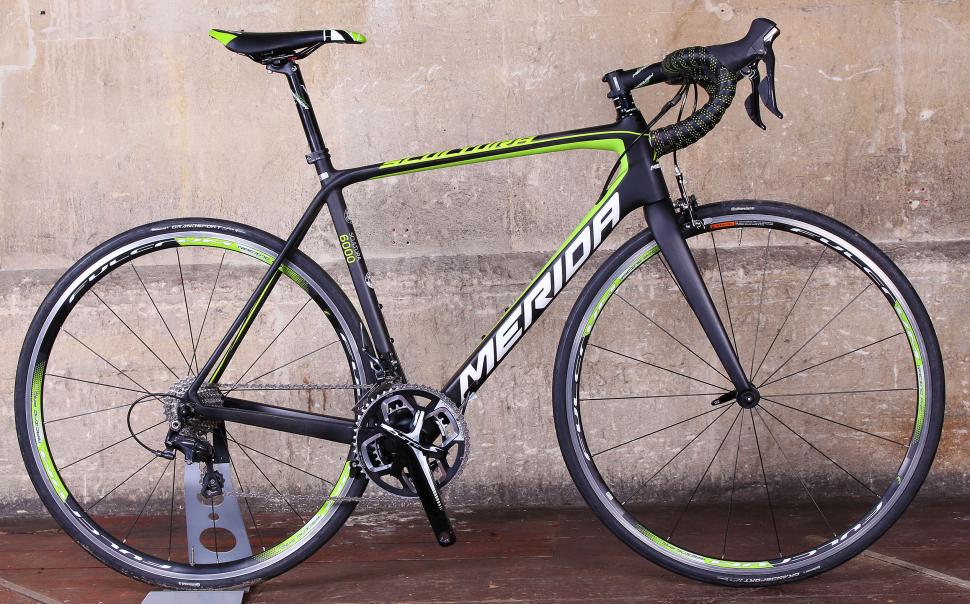




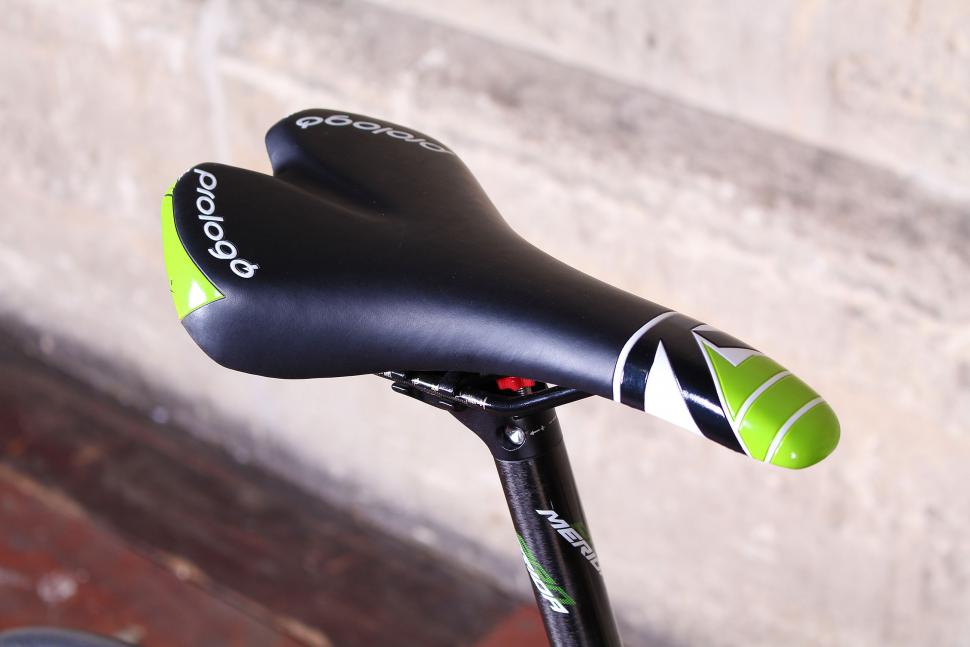
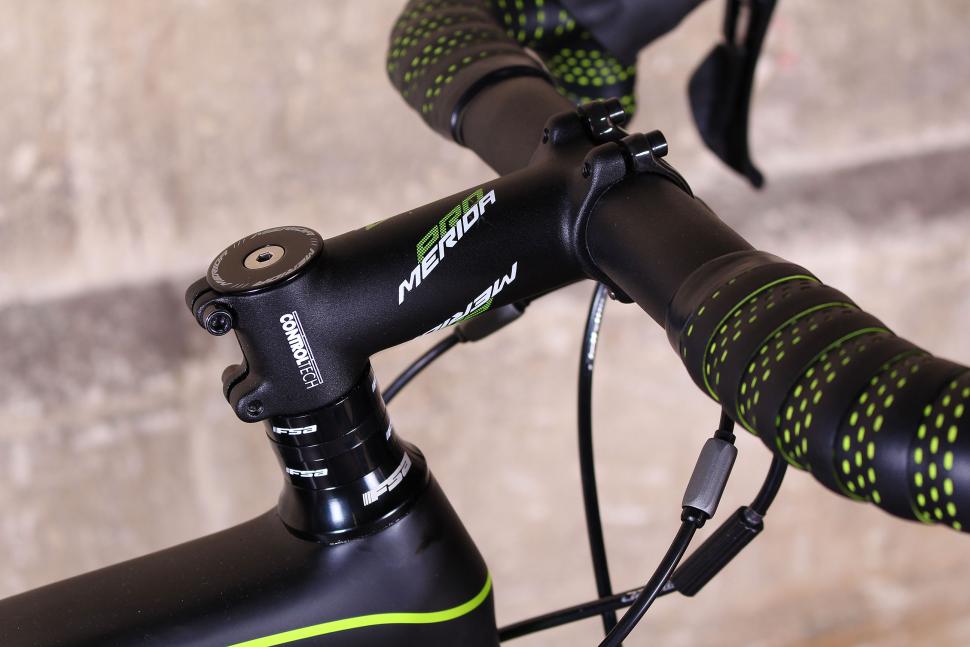
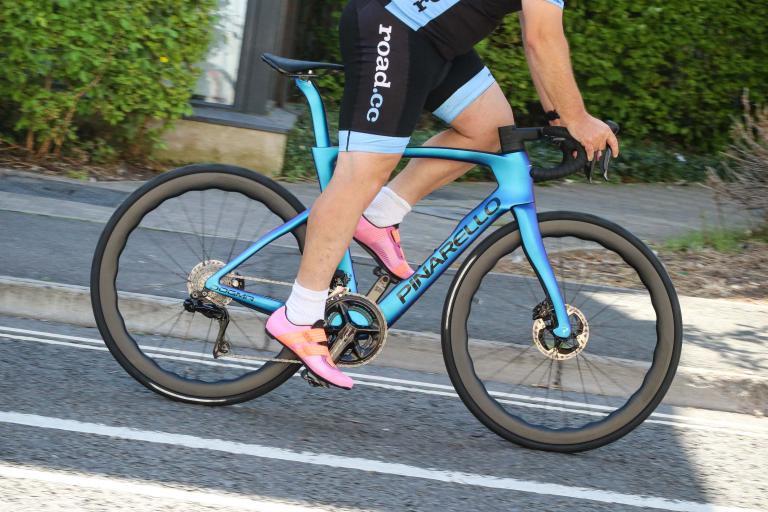
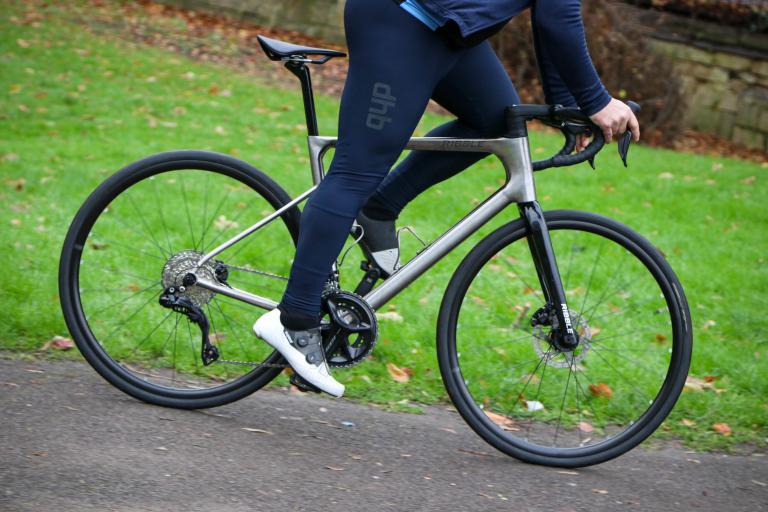


Add new comment
1 comments
Mmmmmmmm - this is why high end aluminium looks a better bet to my way of thinking - e.g. trek ALR 6 with full ultegra weighs about the same but costs £900 less. That leaves plenty for a nice set of wheels and then some over. Also similar models from cannondale, canyon etc.